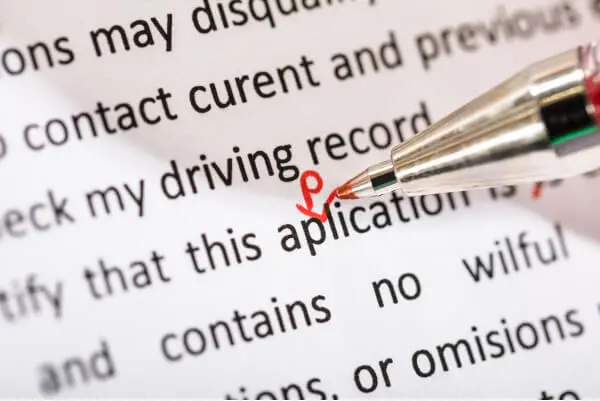
Human Post-Editing of Machine Translations
Although machine translation technology has made impressive advances in recent years, it cannot yet replace the discerning judgment of a skilled human translator. At Trusted Translations, we recognize that the two work best in tandem, with a human translator post-editing translations done by machine.

Human Post-Editing of Machine Translations
Although machine translation technology has made impressive advances in recent years, it cannot yet replace the discerning judgment of a skilled human translator. At Trusted Translations, we recognize that the two work best in tandem, with a human translator post-editing translations done by machine.
Machine Translation Related Content
Home » Services » Machine Translation » Human Post-Editing of Machine Translations
Why Human Post-Editing Is Essential for Accurate Machine Translations
Have machine translations reached full parity with humans? Not quite—which makes a human touch essential. The accuracy and effectiveness of machine translations will depend on numerous factors, such as language combination, content domain, complexity and technical level, whether the content is prosaic or creative, how well-written the source content is, input format, and more.
Due to these infinite variations, machine translations are not able to detect every linguistic nuance and produce a correct translation in every instance. In most cases, to guarantee a highly reliable translation output when utilizing machine translation, human post-editing is indispensable. Moreover, if you are using a Custom Neural Machine Translation Engine (CMTE), feedback from a human linguist is necessary for retraining purposes to improve performance.
At Trusted Translations, we have expert linguists trained specifically to post-edit machine-generated translations. Our skilled post-editors rely on their experience with machine or automated translation output not only to provide corrections, but also to improve future output.
With the right technology tools in place, the post-editing process will improve the output quality of a current translation project, allow you to store that quality data in your translation memory (TM), and also improve the efficiency and accuracy of the machine translation engine for future projects.
Translating and Post-Editing Processes
The processes of translating and post-editing machine-generated content are quite different; each one calls for distinct skills and training. Not all translators are comfortable doing post-editing; even if they sign on for post-editing, they often require training.
Quite recently, academia has started developing curricula to address the growing demand for human post-editors. This training begins with the mental process used when reviewing bilingual content. When translating content from scratch, faced with a “target” (the would-be translation) that is a blank canvas, translators normally:
- Read the source content carefully.
- Formulate the translation internally (i.e., in their brain).
- And finally, type their version in the target language (translation) in a software program or interface.
Depending on the content and project, the translator may edit the text immediately, conduct additional research, or return to it later when the entire text has been translated.
In post-editing machine translated content, however, the process is very different, and it is generally performed with the use of a computer-assisted translation tool (CATT):
- First, the post-editor (linguist) reads a sentence, or segment, of the MT output (that is, the process begins at the target).
- The MT output is compared to the source text.
- The post-editor makes an in-the-moment judgment of the MT output’s quality, based on linguistic knowledge and explicit instructions.
- If the MT output is acceptable, they continue working to improve the text.
- If the MT output is of poor quality, they delete whatever the MT is offering and re-translate it from scratch (as in the translation process listed above).
As part of a machine-translation post-editing process, the project will often include a translation memory (TM) that contains translation segments from previous translation jobs of similar/related material, usually from clients or other similar projects. These previously translated segments contained in the TM, may be either a fuzzy (an approximation) or a full match of the current source segment. Taking a look at what the TM offers, the post-editor can either use these previous translation segments in their entirety or make the necessary adjustments.
Human Post-Editing and Human Translation
Compared to reviewing human translations, editing machine-generated translations requires a very different approach and set of skills.
Due to the complex nuances in language, machine translations often miss critical subtleties, making accurate translations challenging. To ensure a reliable output, machine translation post-editing services are typically required. This human oversight is vital, especially when using a Custom Neural Machine Translation Engine (CMTE), as human feedback supports retraining to boost translation performance.
Human translations can be more prone to errors when translating numerical values and to making omissions. Some linguists, when trying to clarify meaning, may even add content that strays from the source. Overall, however, human translations are far better at creating a natural-sounding output, with fewer errors in context and meaning.
At Trusted Translations, we train our machine translation post-editors to recognize these differences and to utilize our proprietary tools to improve output. Furthermore, our tools help editors re-translate awkward phrases in a manner that “trains” the machine translation engine to improve on future output.
Light and Full Post-Editing
At Trusted Translations, we believe there is no one-size-fits-all solution; instead, we adapt every solution to our clients’ needs.
If your focus is on quality, we evaluate not only the translation engine’s performance, but also the level of post-editing needed according to the usability of the output. In this case, a full (ready-to-publish) post-editing would be the goal. That is, if your bilingual content were to go through an additional review step (editing, for instance), the editor should not detect any differences between an MT post-edited segment and a 100% HT (human-translated) segment.
If cost is the driver, or if time is of the essence—and if the quality of the MT output is decent enough—we may recommend only light post-editing to make the text flow better. We will also correct major grammatical errors, with the help of a spell-checker, and even improve terminology usage.
Post-Editing and Pre-Editing
Post-editing should not be confused with pre-editing. Pre-editing refers to the preparation involved prior to running a particular text through an automatic translation tool. A pre-editor will review the content for basic errors, tagging certain content to be translated a certain way (or to not be translated at all) and optimizing the formatting—for example, completing any part of the original file that was illegible.
This preparation greatly improves output quality and is considered a vital step in most machine or automated translation projects, making it easier for post-editors to produce a quality translation. As machine translation technology continues to improve, it’s vital to have human editors perform both the pre-editing and post-editing processes in order to produce reliable translations.
If you’re interested in polishing your machine translations with the help of an expert human team, reach out to Trusted Translations today.











